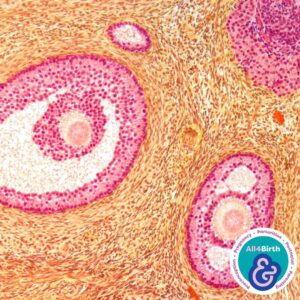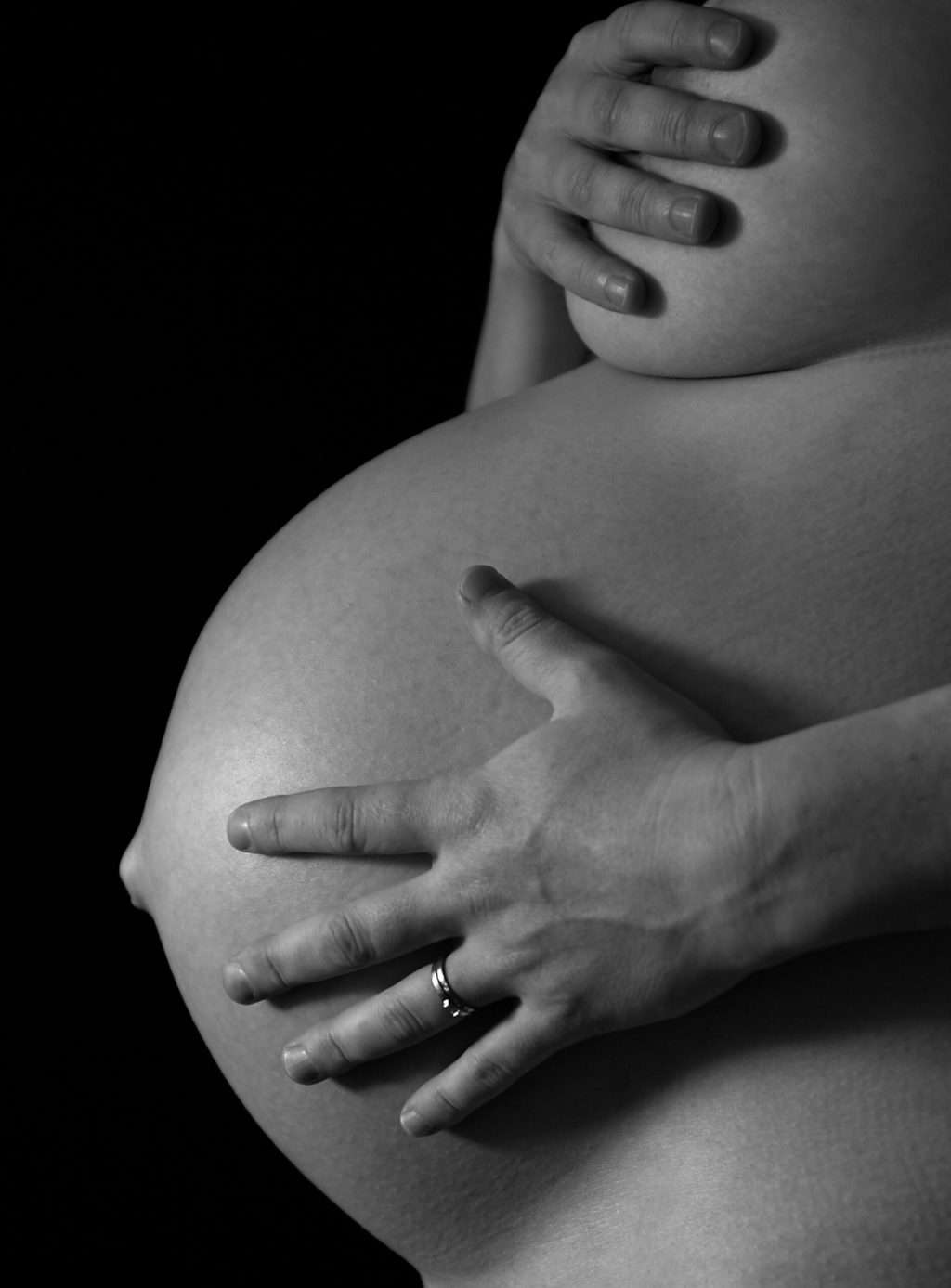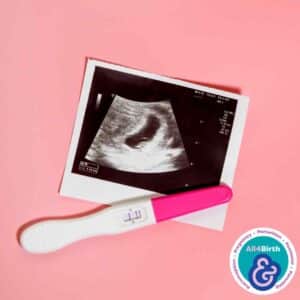Nearing the Finish Line: Understanding the Physiological Changes of the Third Trimester
Abbie Tomson
Midwife MSc, BSc, Yoga Teacher, Project Lead at All4Birth
@enevlorel
As the journey through pregnancy enters its final stretch, the third trimester, spanning weeks 28 to 40, brings about a crescendo of physiological changes in preparation for the imminent arrival of your little one. In this blog post, we’ll explore the intricate transformations during this crucial period and shed light on the signs and symptoms associated with the third trimester of pregnancy.
Baby’s Growth Spurt
During the third trimester of pregnancy, your baby undergoes significant anatomical changes as it prepares for life outside the womb. Some of the key developments include:
- Rapid Growth: The baby experiences a substantial increase in size and weight. Organs continue to mature and develop, although they are not fully functional until after birth.
- Brain Development: The brain continues to grow and develop, with neurons forming connections and brain structures becoming more complex. This period is crucial for cognitive development.
- Lung Maturation: The lungs undergo further development, including the production of surfactant, which helps the air sacs inflate correctly and prevents them from collapsing. This prepares the baby for breathing air after birth.
- Bone Formation: Bones continue to ossify (harden) and become stronger, although they are still relatively flexible to aid the birthing process.
- Fat Accumulation: The baby accumulates more fat under the skin, which helps regulate body temperature and provides energy after birth.
- Refinement of Senses: The baby’s senses, such as hearing, sight, and touch, become more refined. They may respond more actively to external stimuli like light or sound.
- Digestive System Development: The digestive system matures further, and the intestines accumulate meconium, a dark, sticky substance made up of waste products, which will be expelled after birth.
- Immune System Development: The immune system continues to develop, with the baby receiving antibodies from the mother through the placenta, providing passive immunity for the first few months of life.
- Positioning for Birth: Towards the end of the third trimester, the baby typically settles into a head-down position in preparation for birth. However, some babies may remain in a breech position (feet or buttocks first).
These changes collectively prepare the baby to transition from intrauterine life to the external environment after birth.
Braxton Hicks Contractions
Braxton Hicks contractions, also known as “practice contractions,” are sporadic uterine contractions that can occur during pregnancy, particularly in the third trimester. While they can be uncomfortable, they are usually mild and irregular and do not indicate the onset of labour. The anatomical and physiological reasons behind Braxton Hicks’s contractions are thought to be as follows:
- Uterine Muscles: The uterus is composed of smooth muscle tissue. Throughout pregnancy, the uterus undergoes significant growth and stretching to accommodate the growing fetus. Braxton Hicks contractions are believed to be a result of the uterine muscles tightening and then relaxing intermittently. These contractions might be the uterus’s way of practising for the eventual labour process.
- Increased Sensitivity: As pregnancy progresses, the uterus becomes more sensitive to various stimuli, including changes in hormonal levels and movements of the baby. These stimuli can trigger the uterine muscles to contract, resulting in Braxton Hicks contractions.
- Dehydration or Full Bladder: Dehydration or having a full bladder can sometimes trigger Braxton Hicks contractions. When a pregnant person is dehydrated, the body might release certain hormones that stimulate uterine contractions. Similarly, a full bladder can put pressure on the uterus, leading to contractions.
- Physical Activity: Engaging in physical activity or specific movements may provoke Braxton Hicks contractions. Exercise can stimulate blood flow and increase the release of certain hormones, which might influence uterine activity.
- Hormonal Changes: Fluctuations in hormone levels, particularly the hormone oxytocin, can influence uterine contractions. While oxytocin is commonly associated with labour and breastfeeding, it can also play a role in stimulating uterine activity during pregnancy, contributing to Braxton Hicks’s contractions.
It’s important to note that while Braxton Hicks contractions are a normal part of pregnancy, they can sometimes be confused with true labour contractions. True labour contractions (typically) become more regular, frequent, and intense over time. They are accompanied by other signs of labour, such as the mucus plug release or the amniotic sac rupture. If there is any uncertainty about whether contractions indicate the onset of labour, you must contact your midwife.
Pelvic Pressure and Back Pain
Pelvic pressure and back pain are common discomforts experienced by many pregnant individuals, especially in the third trimester. Several anatomical and physiological factors contribute to these sensations:
- Weight Gain: As pregnancy progresses, the uterus expands to accommodate the growing fetus. This additional weight in the abdominal area can cause increased pressure on the pelvis and lower back, leading to discomfort and pain.
- Shift in Center of Gravity: As the uterus grows, it shifts the centre of gravity forward. This change in alignment can place extra strain on the lower back muscles, contributing to back pain.
- Hormonal Changes: During pregnancy, the body produces hormones like relaxin and progesterone, which help relax the ligaments and joints in the pelvis to prepare for childbirth. While this is necessary for the birthing process, it can also lead to instability in the pelvic joints, causing pelvic pain and discomfort.
- Postural Changes: Pregnant individuals may unknowingly adjust their posture to compensate for the shift in the centre of gravity and accommodate the growing belly. This altered posture, such as increased lordosis (swayback), can strain the lower back muscles and contribute to back pain.
- Stress on Pelvic Floor Muscles: The pelvic floor muscles support the pelvic organs, including the bladder, uterus, and rectum. As the uterus expands and the baby grows, increased pressure is placed on these muscles, leading to feelings of pelvic pressure and discomfort.
- Engagement of Baby: Towards the end of the third trimester, the baby may descend into the pelvis in preparation for birth. This engagement can increase pressure on the pelvic floor and contribute to pelvic discomfort.
- Sciatic Nerve Compression: The sciatic nerve, which runs from the lower back down through the buttocks and into the legs, can become compressed or irritated due to the changes in pelvic alignment and pressure from the growing uterus. This compression can result in sciatica, a sharp or shooting pain that radiates down the buttocks and legs. If this radiates down both sides, this is a concerning sign and must prompt urgent contact with a healthcare professional.
These anatomical and physiological changes are natural aspects of pregnancy as the body prepares for childbirth. However, strategies such as pregnancy exercises, proper posture, heat or cold therapy, massage, and support devices like maternity belts can help alleviate pelvic pressure and back pain to improve comfort during pregnancy. Pregnant individuals need to discuss any persistent or severe discomfort with their midwife to rule out any underlying issues.
Shortness of Breath
Shortness of breath is a common symptom experienced by many pregnant individuals, especially during the third trimester. The reasons behind shortness of breath during this time include:
1. Uterine Expansion: As the pregnancy progresses, the uterus expands significantly to accommodate the growing fetus. This expansion can push against the diaphragm, the muscle responsible for breathing, reducing its ability to contract and expand fully. As a result, pregnant individuals may feel breathless or experience a sensation of reduced lung capacity.
2. Hormonal Changes: During pregnancy, hormonal changes, particularly increased progesterone levels, can affect the respiratory system. Progesterone acts as a respiratory stimulant, increasing the rate and depth of breathing to meet the increased oxygen demand of both the pregnant and the growing fetus. However, these changes can also lead to a feeling of breathlessness, especially in the later stages of pregnancy.
3. Increased Blood Volume: Pregnancy causes an increase in blood volume to support the needs of the developing fetus. This increased blood volume leads to a higher cardiac output, resulting in a feeling of breathlessness as the heart works harder to pump blood throughout the body.
4. Pressure on the Diaphragm: Besides uterine expansion, other factors, such as the baby’s position and movements, can exert pressure on the diaphragm, further contributing to feelings of breathlessness.
While shortness of breath is often an expected symptom of pregnancy, it can sometimes be a concerning sign of a pulmonary embolism, especially if accompanied by other symptoms. A pulmonary embolism occurs when a blood clot travels to the lungs, obstructing blood flow. Signs and symptoms of a pulmonary embolism may include:
- Sudden Shortness of Breath: A feeling of sudden and severe difficulty breathing, which may worsen with exertion.
- Chest Pain: Sharp or stabbing chest pain that may worsen with deep breaths, coughing, or movement. The pain may also be accompanied by rapid breathing and heart rate.
- Coughing: Coughing, sometimes with bloody or frothy sputum, may occur with a pulmonary embolism.
- Leg Pain or Swelling: In some cases, a pulmonary embolism may be preceded by deep vein thrombosis (DVT), a blood clot in the legs. This can cause pain, swelling, or redness in one or both legs.
- Anxiety or Feeling Lightheaded: A sense of impending doom, anxiety, or feeling lightheaded or dizzy may accompany a pulmonary embolism.
It’s essential to seek immediate medical attention if experiencing sudden or severe shortness of breath, especially if accompanied by any of the symptoms mentioned above, as a pulmonary embolism can be life-threatening if not promptly treated.
Nesting Instinct
The nesting instinct in the third trimester, often observed in pregnant individuals, involves an intense urge to prepare the home for the baby’s arrival.
1. Anatomical and Physiological Factors:
– Hormonal Changes: Significant hormonal fluctuations during pregnancy include increases in estrogen and progesterone levels. These hormones can influence mood, behaviour, and cognitive function, possibly contributing to the nesting instinct.
– Biological Preparedness: From an evolutionary perspective, the nesting instinct may have developed as a survival mechanism. Ensuring a safe and comfortable environment for the newborn can enhance its chances of survival and well-being. This biological preparedness is deeply ingrained in human nature and may be linked to ancestral instincts for nurturing offspring.
– Energy Surges: The third trimester often brings bursts of energy, especially after the fatigue commonly experienced in earlier stages of pregnancy. This increase in energy levels can drive pregnant individuals to engage in activities such as cleaning, organizing, and decorating the home in preparation for the baby’s arrival.
2. Spiritual and Emotional Factors:
– Connection to Ancestral Wisdom: Many cultures and belief systems emphasise the importance of creating a nurturing environment for the baby’s arrival. The nesting instinct may be viewed as a manifestation of ancestral wisdom passed down through generations, guiding individuals to honour and respect the transition into parenthood.
– Emotional Preparation: Pregnancy is a profound emotional journey, marked by anticipation, excitement, and sometimes anxiety. Engaging in nesting behaviours can provide a sense of control and empowerment during significant life changes. Pregnant individuals can channel their emotions into tangible actions that symbolise their readiness to welcome and care for their newborn.
– Spiritual Connection: For some individuals, the nesting instinct may be intertwined with spiritual beliefs and practices related to childbirth and parenthood. Creating a harmonious and sacred space for the baby’s arrival can be seen as a spiritual act, aligning with beliefs about the interconnectedness of family, home, and the divine.
Conclusion
The third trimester is a remarkable time of anticipation and preparation as the body undergoes significant changes to support the impending arrival of your baby. While the physiological changes may bring some discomfort, each shift is a testament to the miraculous process of creating new life. As always, consult with your midwife to ensure a healthy and well-monitored pregnancy, and embrace the final stage of this incredible journey.
Links to resources
 Books
Books
Brain Health from Birth: Nurturing Brain Development During Pregnancy and the First Year by Rebecca Fett
Real Food for Pregnancy by Lily Nichols
 Film Audio and Apps
Film Audio and Apps
Baby Buddy app, created by the Best Beginnings Charity
References
- Coad, J. (2019). Anatomy and Physiology for Midwives. Elsevier.
- Marshall, J. E., & Raynor, M. D. (2019). Myles Textbook for Midwives. Elsevier.
- Tossetta G. (2023). Physiology and Pathophysiology of the Placenta. International journal of molecular sciences, 24(10), 9066. https://doi.org/10.3390/ijms24109066
- Pascual ZN, Langaker MD. Physiology, Pregnancy. [Updated 2023 May 16]. In: StatPearls [Internet]. Treasure Island (FL): StatPearls Publishing; 2024 Jan-. Available from: https://www.ncbi.nlm.nih.gov/books/NBK559304.














